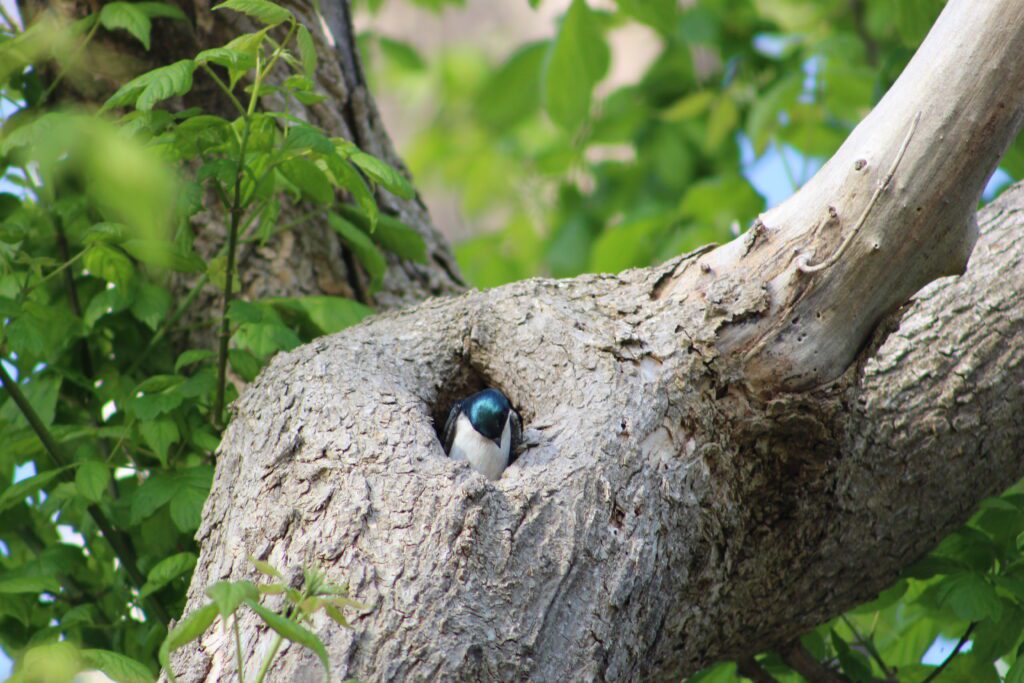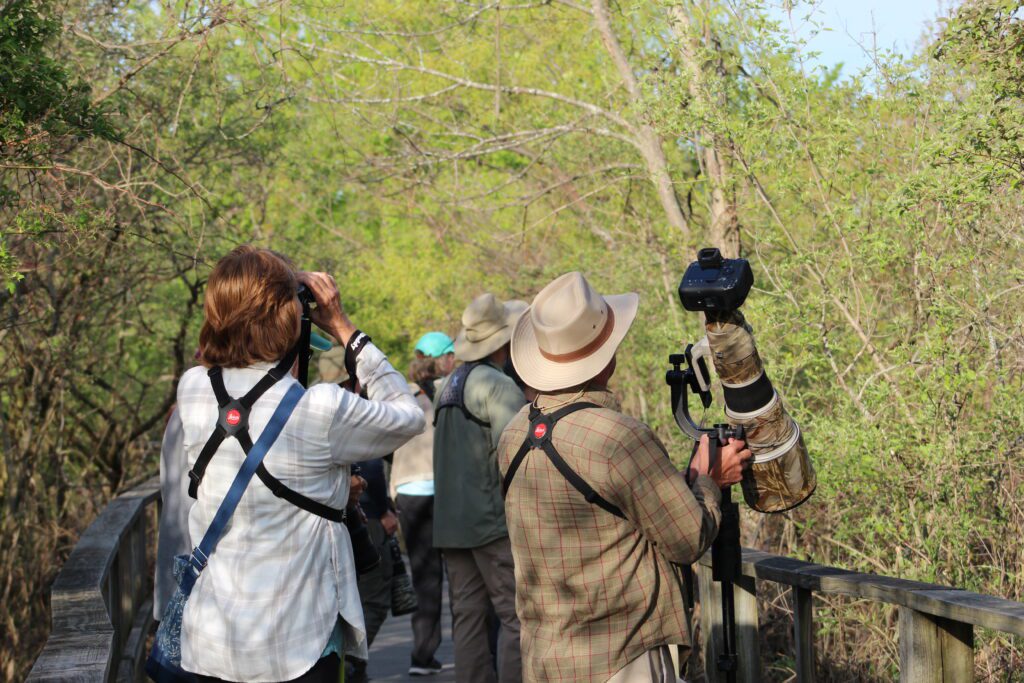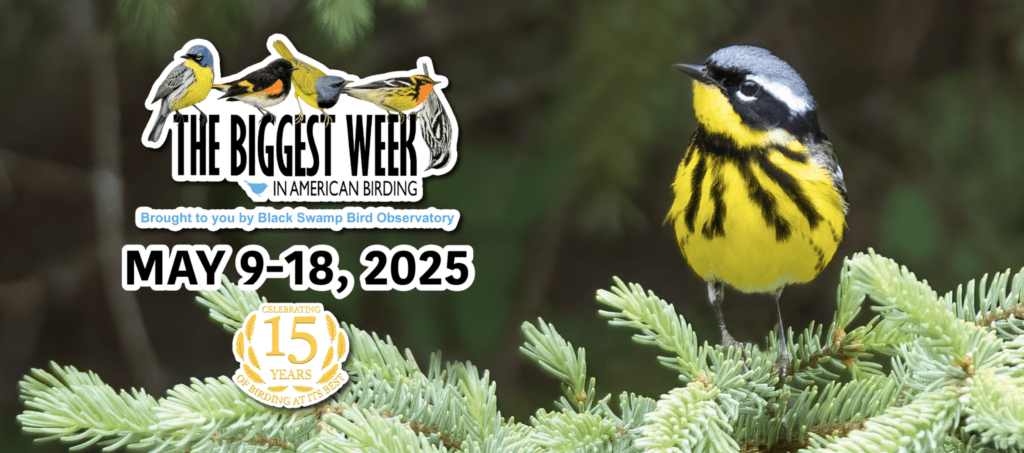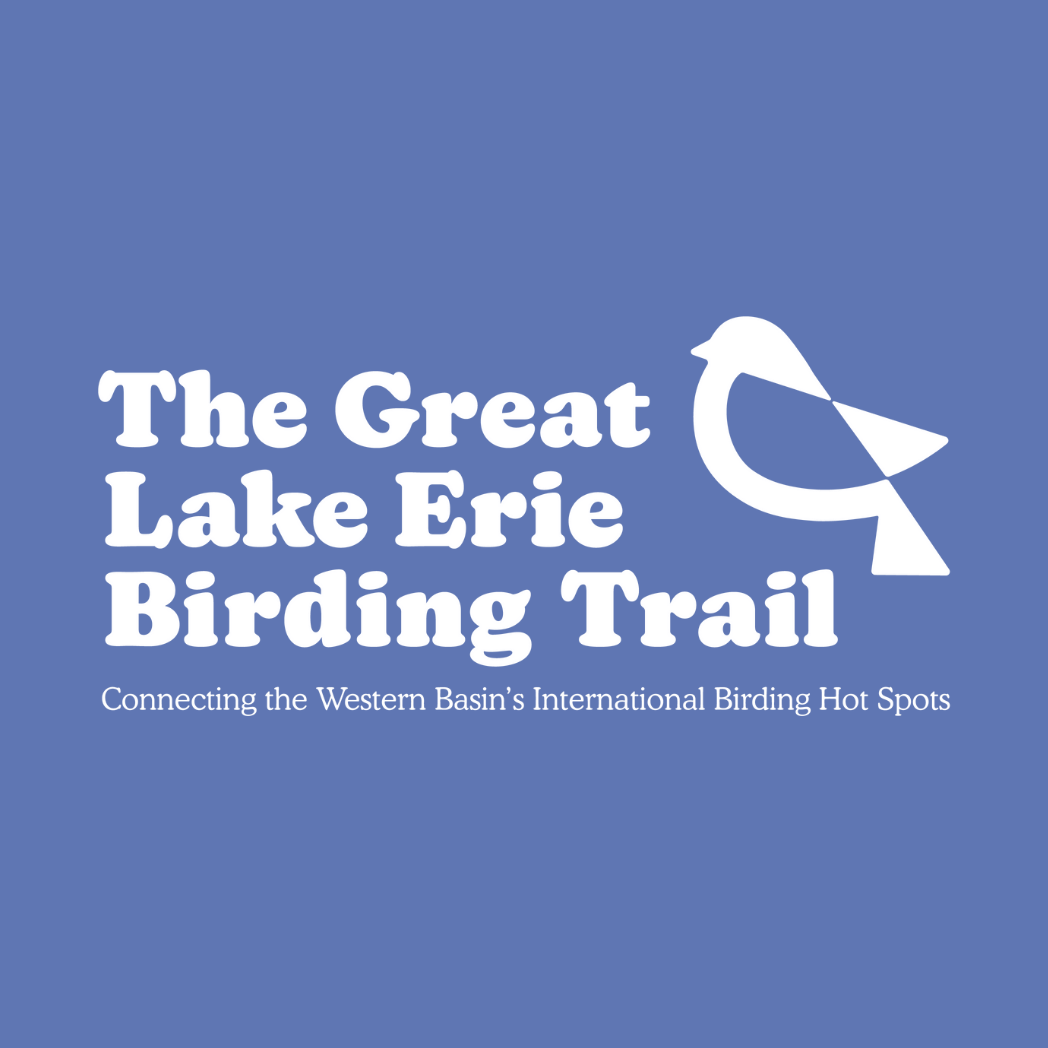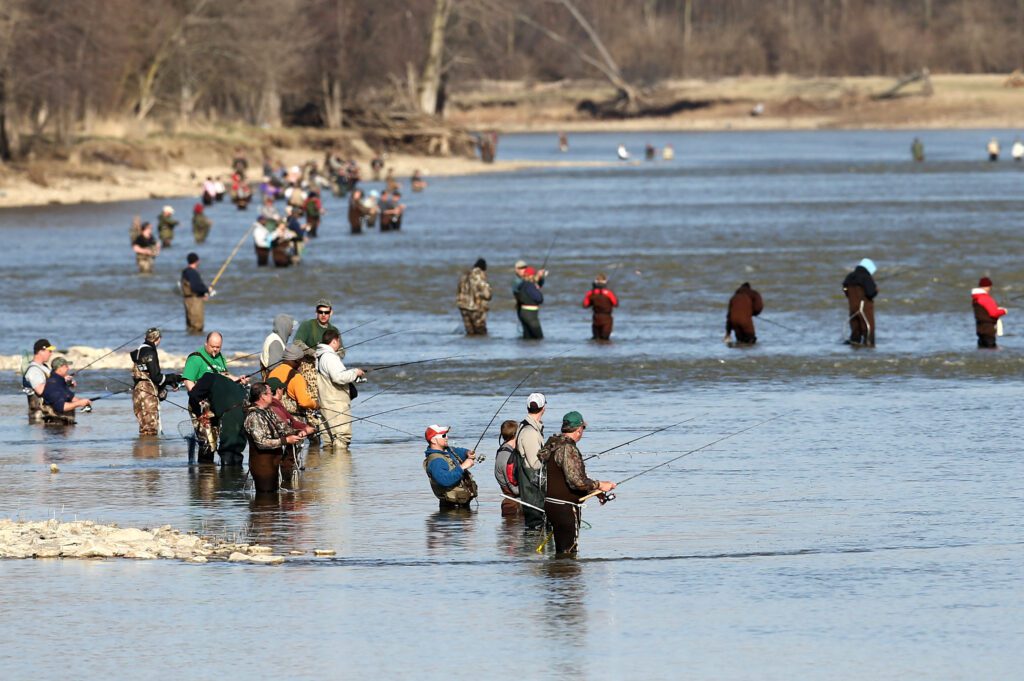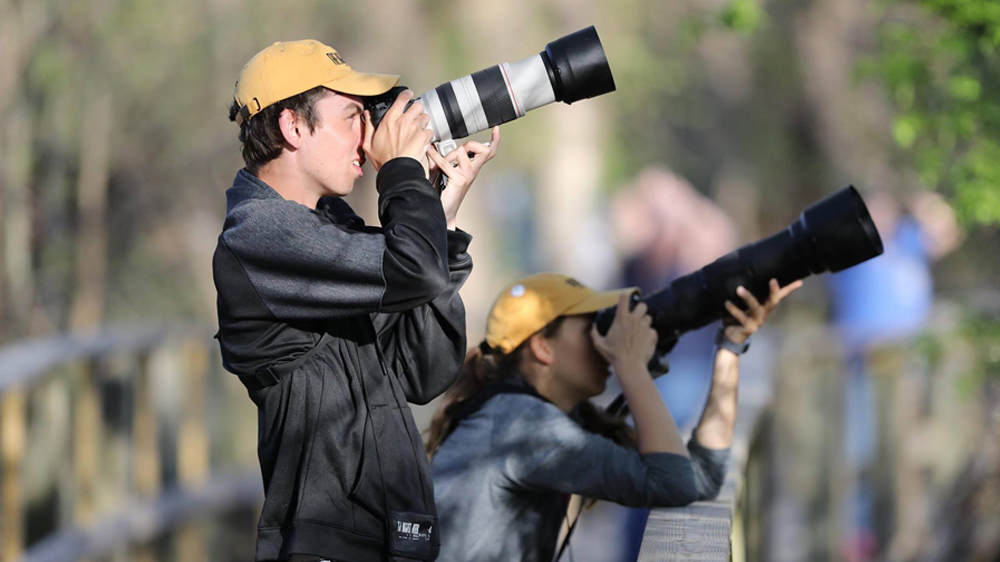
BIRDING IN THE
WARBLER CAPITAL OF THE WORLD

Northwest Ohio’s spring migration phenomenon draws more than 90,000 visitors to our region each year, making the Toledo Region the Warbler Capital of the World!
Welcome, fellow bird enthusiasts, to the vibrant world of birding in Northwest Ohio, the western basin of Lake Erie, and Canada! Nestled in the heart of the Great Lakes region, this area is known as a haven for birdwatchers, boasting diverse habitats and a rich array of bird species throughout the year, but especially during spring and fall migration.
Here in Toledo, we know birding is more than just a hobby, the passion of birders from around the world is felt as more than 90,000 birders convene in this area for the Biggest Week in American Birding each year. it’s a passion that connects us with the natural world, fostering a deep appreciation for biodiversity and conservation.
You may be surprised to find that birding is one of the top attractions in the Toledo region. Remarkably, tens of thousands of visitors converge on northwest Ohio each spring from all 50 states, 54 countries and 6 continents. Amazing, right? The folks over at Black Swamp Bird Observatory aren’t surprised. They knew the natural phenomenon of the spring bird migration could turn the Lake Erie shoreline and beyond into a tourism mecca, so they launched The Biggest Week in American Birding in 2009 headquartered at Maumee Bay Lodge & Conference Center.
Looking for a self-guided birding experience? Check out the Great Lake Erie Birding Trail.

What is The Biggest Week in American Birding?
The Biggest Week in American Birding is a 10-day festival in northwest Ohio, where visitors immerse themselves in spring songbird migration and experience some of the best birding North America has to offer. The festival has something for the beginner and seasoned birders alike, with bird identification workshops, guided birding hikes, beginning birder outings, birding by kayak and boat, keynote presentations, a Birder’s Marketplace, and evening socials. Please note that the festival events sell out early each year. Visit biggestweekinamericanbirding.com for a list of events that are open to the public.
The festival offers bird identification workshops, guided birding trips, birding by canoe, birding walks at Magee Marsh, American Woodcock field trips, a birder’s marketplace and keynote presentations. Social events are also held in the evenings.
Warblers…The Stars of the Show
Birders and nature lovers will enjoy viewing the flocks of songbirds and waterfowl during the annual spring migration, but the majority of visitors are here to witness the star of the show, the small but mighty warbler. These birds weigh less than a half an ounce! Birders travel far and wide to gather on the boardwalk at Magee Marsh (known as the area’s birding epicenter) with their binoculars, cameras and checklists to keep a tally of their treasured warbler sightings, hoping to get a glimpse of that elusive warbler yet to make their list.
What Makes Northwest Ohio a Birding Mecca?
According to the folks that head up the Black Swamp Observatory, northwest Ohio is simply the best place to witness the spring migration of songbirds anywhere in North America. Lake Erie acts as a barrier that the birds are reluctant to cross during migration. The birds gather in marshlands on the lake’s southern edge to refuel and rest before crossing Lake Erie. In addition, the trees are just beginning to bud and the visibility of the birds is exceptional. Birders may see up to 20 species of warblers along with thrushes, vireos, flycatchers, orioles, eagles and shorebirds.
To learn more about the Black Swamp Bird Observatory and their conservation efforts of birds and their habitats, visit bsbo.org.
Birding Hot Spots in our Metroparks
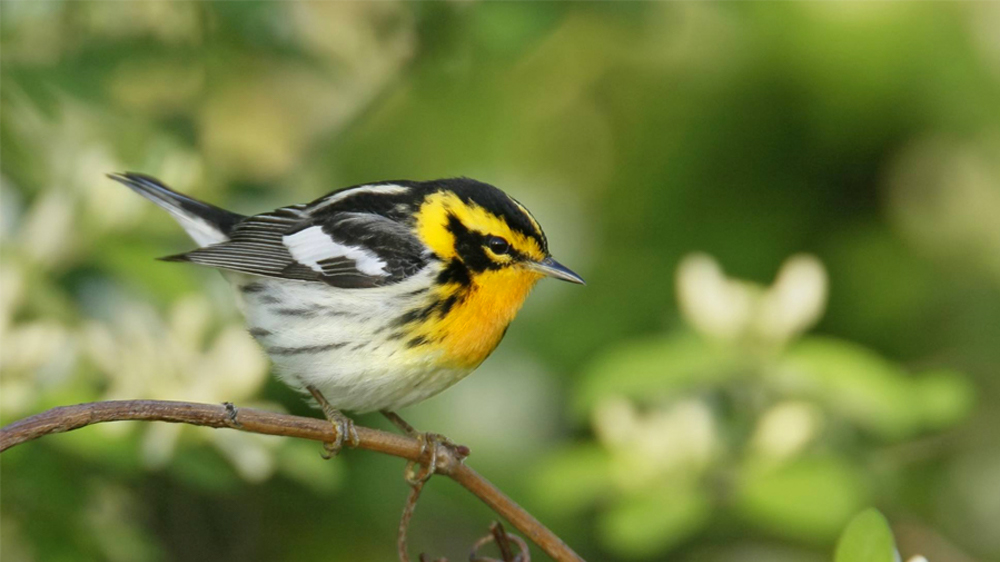
Metroparks Toledo has an abundance of birding hot spots of their own.
Oak Openings and Pearson offer the best examples of bird migration in the Toledo area. Oak Opening’s unique habitat of sand dunes and wet swales is the nesting place of bluebirds, indigo buntings, whippoorwills and many other species, as well as an excellent location to see migrating songbirds in the spring.
Pearson is a favorite stopover for the wide variety of migrating birds with its thick woods and location close to Lake Erie. Toledo Botanical Garden’s lush gardens, abundant trees and water features attracts plenty of warblers in the spring. In addition, a fall migration of hawks often passes through the park. Howard Marsh, located near Lake Erie, is a magnet for shorebirds and waterfowl.
Additional featured Metroparks for birding include: Wildwood Preserve, Secor Metropark, Swan Creek, Side Cut, Providence, Farnsworth, Bend View, Toledo Botanical Garden, Wiregrass Lake and Blue Creek.



